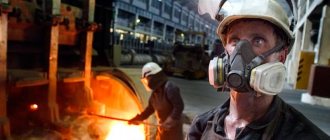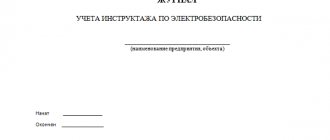Main characteristics of personnel
Before qualification, you need to understand who exactly belongs to the personnel. Personnel are characterized by these characteristics:
- Involvement in labor relations. The latter must be documented. In particular, an employment agreement must be drawn up.
- Characteristics on the basis of which activities are carried out. For example, this could be qualifications, specialty, education, experience.
- Having a goal for the activity. The goals of the specialist’s work must be correlated with the goals of the enterprise.
Personnel management is distinguished by such features as:
- Integration into the overall management structure.
- Compliance with the existing corporate culture.
- Availability of job planning and employee training.
- Taking into account professional qualities and assessing the performance of employees.
- Centralization of management processes.
Employees who are not registered at the enterprise in any way will not be considered personnel.
Violation of labor legislation consists of actions or inaction of officials of the organization that violate the norms of the Labor Code and other regulations, which resulted in a violation of the rights of workers. In case of violations of labor legislation, all types of liability apply: disciplinary, material, civil, administrative and criminal. View characteristics of types of liability
What categories are the personnel divided into?
8080 Contents of the page Personnel are persons who are included in labor relations within a specific legal entity. This is the personnel of the enterprise, which includes employees, owners and co-owners.
Before qualification, you need to understand who exactly belongs to the personnel. Personnel are characterized by these characteristics:
- Characteristics on the basis of which activities are carried out. For example, this could be qualifications, specialty, education, experience.
- Involvement in labor relations. The latter must be documented. In particular, an employment agreement must be drawn up.
- Having a goal for the activity. The goals of the specialist’s work must be correlated with the goals of the enterprise.
Personnel management is distinguished by such features as:
- Compliance with the existing corporate culture.
- Centralization of management processes.
- Integration into the overall management structure.
- Taking into account professional qualities and assessing the performance of employees.
- Availability of job planning and employee training.
Employees who are not registered at the enterprise in any way will not be considered personnel. Personnel categories are regulated by “Instruction on the number of workers at enterprises” No. 17-10-0370, approved by the State Statistics Committee on September 17, 1987.
The key document is also the Classifier of Occupations No. 367, approved by the State Standards Decree of January 26, 1994. The Ministry of Health and Social Development has issued several orders that approve qualification categories:
- Order No. 525 of August 6, 2007. Establishes criteria for assigning staff representatives to a particular qualification group.
- Order No. 247n dated May 29, 2008. It also establishes qualification levels, but this time relative to managers and specialists.
- Order No. 248n dated May 29, 2008. Establishes qualification levels for employees.
The regulations highlight these groups of personnel:
Regulatory rationale
Personnel categories are regulated by “Instruction on the number of workers at enterprises” No. 17-10-0370, approved by the State Statistics Committee on September 17, 1987. The key document is also the Classifier of Occupations No. 367, approved by the State Standards Decree of January 26, 1994. The Ministry of Health and Social Development has issued several orders that approve qualification categories:
- Order No. 525 of August 6, 2007. Establishes criteria for assigning staff representatives to a particular qualification group.
- Order No. 248n dated May 29, 2008. Establishes qualification levels for employees.
- Order No. 247n dated May 29, 2008. It also establishes qualification levels, but this time relative to managers and specialists.
The regulations highlight these groups of personnel:
- Positions of workers and employees for which no professional education is required.
- Positions that require primary or secondary education.
- Managerial positions that require initial professional education.
- Specialties that require higher education (qualification “bachelor”).
- Positions for which you need to have a higher education with the qualification “certified specialist” or “master”.
The need for education is determined depending on the specifics of the activity. Complex intellectual work requires the availability of appropriate knowledge and skills. Basic education is sufficient to perform simple work.
Personnel classification
Are you here A.V.
Soloviev Deputy Head of the Department of Standardization and Labor Productivity of the Department of Remuneration, Standardization and Labor Productivity of the Ministry of Labor of Russia Please explain who belongs to the AUP (administrative and managerial personnel), to the engineering and technical personnel (engineering and technical workers)? O.A. Volkova, Mr. Syzran, Samara region.
Recently, a controversial question arose: who do we still classify as “administrative and managerial personnel”?
Directors, heads of workshops and sections, foremen - this is understandable.
What about specialists (economists, accountants, engineers), other employees (secretaries, cashiers, etc.)? To be honest, what kind of managers are they? Maybe you can tell me and recommend something interesting? M. Dove, Mr. Moscow The answer to the question about the content of the terms “administrative and managerial personnel” (AUP) and “engineering and technical workers” (E&T), as well as the legality of their use, must be sought in the Labor Code of the Russian Federation and other regulatory legal acts. From Article 15 of the Labor Code RF it follows that the personnel of an organization may consist of workers performing a labor function: 1) in a certain specialty; 2) in a certain qualification; 3) in a certain position. Each of the above categories requires additional comment. The number of employees performing a labor function in a certain specialty includes persons who acquired the corresponding specialty after completing training in the manner prescribed by the standards of the Ministry of Education of Russia. When concluding employment contracts with an employer, persons with a certain specialty apply to fill vacant positions in this organization.
The names of the positions of employees of a particular organization are determined according to the All-Russian Classifier of Worker Professions, Employee Positions and Tariff Classes (OKPDTR) and the Qualification Directory of Positions of Managers, Specialists and Other Employees. Since qualifications mean both a profession and a specialty,
Main categories of personnel
Personnel is a collection of employees of various specializations included in the staff. It is divided into two main categories: production and non-production. Production personnel engage in labor, the result of which is expressed in material form. For example, these could be people working on the creation of cars or the construction of buildings. Let's consider the components of the first category:
- Workers. Their activities are mainly physical in nature. These employees specialize in producing goods or servicing production. For example, these could be builders, cooks. Workers are further divided into two categories. These are the main personnel employed in the main production workshops. These are also support staff. Its representatives work in procurement or service shops.
- Employees. Their activity is mainly mental in nature. The result of their work is the identification of management problems, the formation of new information flows, and the adoption of various decisions in the field of management. An example of this category could be accountants, lawyers, and managers. Employees are further divided into three categories. These are the managers of the enterprise itself or its divisions. This group also includes deputy managers. These are specialists: engineers, economists, accountants. The third group is the employees themselves (junior technical staff, accountants and clerks).
The second category is non-production personnel. It refers to employees employed on non-industrial farms. That is, the result of their work is not the creation of something material. Examples of non-production personnel are workers in housing and communal services, canteens, and clinics.
What categories of employees are granted additional annual leave ?
Which positions are classified as employees: production personnel division
Working personnel are divided according to the functions performed. This article will tell you what factors influence the determination of personnel categories, which positions are classified as workers and which are classified as employees.
What categories of personnel are there?
Classification of personnel by category
There are two categories of workers: workers and employees. The second category includes:
- administrative staff;
- managers;
- engineers;
- personnel officers.
In the personnel division classifier, there are only two categories of professions, these include:
- Workers. These workers are engaged in direct production. They are engaged in the production of products in which this enterprise specializes. Moreover, they must maintain production areas in proper condition.
- Employees. These include workers who are not directly involved in the production of products, but their activities are indirectly or directly related to production. They can perform tasks that address important technology issues as well as support work.
Taking into account the categorization of personnel, it is worth distinguishing the main factors that influence the division into classes. Human resources are the most basic element of the production forces; they are the basis for the development of economic sources.
There are several main points in the production process, namely:
- performing production tasks according to skill level;
- influence of educational level;
- degree of professional training;
- advanced training in the work performed;
- what motivation leads to high-quality completion of tasks;
- Experts have found that there is a direct dependence of the financial condition of employees and the ability of the economy to be competitive on the category of working personnel.
Internal production criteria:
- products must meet the requirements of the standards;
- How the technological process is organized at the enterprise.
External production criteria:
- Influence of demographic level.
- Social moral standards.
- Legal principles.
- Criteria characterizing the market for job vacancies.
How are personnel distributed by category?
Distribution of personnel by category
External factors influencing the development of production, including the production of products in demand by society include:
- Indicator of the working-age population.
- Literacy level of workers and employees.
- In what area of employment the work is performed.
- Correct distribution of production forces.
Equally important when assessing characterizing parameters is the quantity and quality of manufactured commercial products.
Personnel are divided into the following categories:
- Labor resources. This includes the population that is capable of performing production tasks, while having a certain age and education. These are citizens directly performing labor functions, as well as potential employees.
- Other employees. These are employees with work experience and level of professional training, whose activities are carried out under a temporary employment agreement.
Business entities are capable of solving problems that do not correspond to their main purpose. Therefore, difficulties arise in determining the importance of those working in auxiliary production.
In total, two subgroups are distinguished, namely:
- those engaged in performing important tasks of the production process or directly servicing technological equipment;
- support workers performing the function of servicing the first subgroup of workers.
When calculating earnings, these points must be taken into account.
Formation of groups according to personnel categories
Personnel classification is based on the following criteria:
- Management team.
- Specialists in the structure of the organization.
- Working staff.
- Service staff.
The management team includes the following employees:
- directors and supervisors;
- management employees;
- section chiefs;
- site foreman;
- deputies in all areas.
Specialists include the following workers: accountants, economists, engineers, lawyers, sociologists, standard setters and others. Employees include: secretaries, draftsmen, agents, accountants, clerks and others.
Personnel is divided into: production and support.
Who are the employees?
Employees: who belongs to them?
Employees who work in an enterprise or organization and are engaged in mental work are employees.
These categories of people are employed in almost all production areas: mechanical engineering, construction, educational institutions and other organizational structures.
If a citizen works in the field of social protection, then appropriate education and a creative approach to completing tasks are required.
Source: https://naimtruda.com/otnoshen/kakie-dolzhnosti-otnosyatsya-k-sluzhashim.html
Categories of managers
Production managers are divided into these categories:
- Linear. These managers make decisions affecting all functional areas of activity. Examples: general director, technical service manager, workshop manager.
- Nonlinear. These are functional managers who perform specific management functions. Examples: financial director, manager responsible for personnel.
Managers are divided by management levels:
- Grassroots level. For example, master.
- Middle level. Heads of department and workshop.
- Senior management. Director or his deputy.
Lower-level managers manage small departments, middle-level managers manage large departments, and senior managers manage the enterprise as a whole.
Classification of enterprise personnel
Personnel are divided into categories depending on specific characteristics. Let's look at them in more detail:
- Property relations. There are owners (founders) of a legal entity. They own a share of the enterprise and profit from its activities. There are also hired employees.
- Degree of involvement in production activities. Production personnel are involved in activities directly, non-production personnel - indirectly.
- Place of main service. Employees may or may not be on the staff of the enterprise.
Some employees differ from others in the specifics of their activities and the characteristics of their labor relationships with enterprises.
Peculiarities of labor regulation of certain categories of workers .
Who are employees and workers?
- Employees - non-manual workers employed in such segments of the economy as public administration (officials, top management), industry (designers, engineers, planners, secondary personnel), education (teachers, graduate students), service sector (tour manager, IT -specialist), trade. This social group is related by such common features as the need for specialized (most often higher) education, the absence of heavy workloads, and the need to use a creative approach in solving assigned problems.
- Workers are the holders of labor resources employed in the production sector of the economy and engaged in manual labor. These include both the traditional “working class” and assembly line production employees, drivers, and builders. Workers do not own the means of production and most often receive wages on a piece-rate basis.
Additional classification
Let's consider additional categories for dividing personnel into groups:
- Forms of production activity (for example, building a building or creating wells).
- Tariff categories (from one to eight).
- Qualification classes (from one to three).
- Payment models for work (for example, classic, piecework, bonus).
- Level of mechanization of activities (manual or automated work).
- Production areas (senior, senior assistant).
The following positions can also be classified:
- Positions: manager or specialist.
- Position: senior and junior.
- Level of qualification (1-3 grade).
FOR YOUR INFORMATION! In Russia there is a main Classifier of professions.
Unified tariff reference book for positions in education (UTKS)
Art. 143 of the Labor Code of the Russian Federation states that if an employee fulfills the requirements of the ETKS, he has legal grounds for assigning a tariff category, as well as tariffication of his work. Below is a list of what this guide contains:
- Qualification characteristics of positions (QCD).
- Descriptions of job responsibilities.
- Requirements for the level of knowledge.

In the context of this article, item number 1 of the above list will be especially carefully considered.
In Russia, ETKS has a second name - the Unified Qualification Directory of Positions for Education Workers. It is supervised by the Ministry of Health and Social Development of the Russian Federation.
Depending on what the position belongs to one or another category
There are the following characteristics that influence the attitude of a position to a particular category:
- The level of education.
- Skill level.
- Having professional experience.
- Employment registration (for example, a person can work part-time).
- Specificity of activity (physical or intellectual).
- Presence of subordinates.
- Place of work.
As a rule, personnel can be clearly qualified. The structural composition of employees is determined depending on the characteristics of a particular event.





